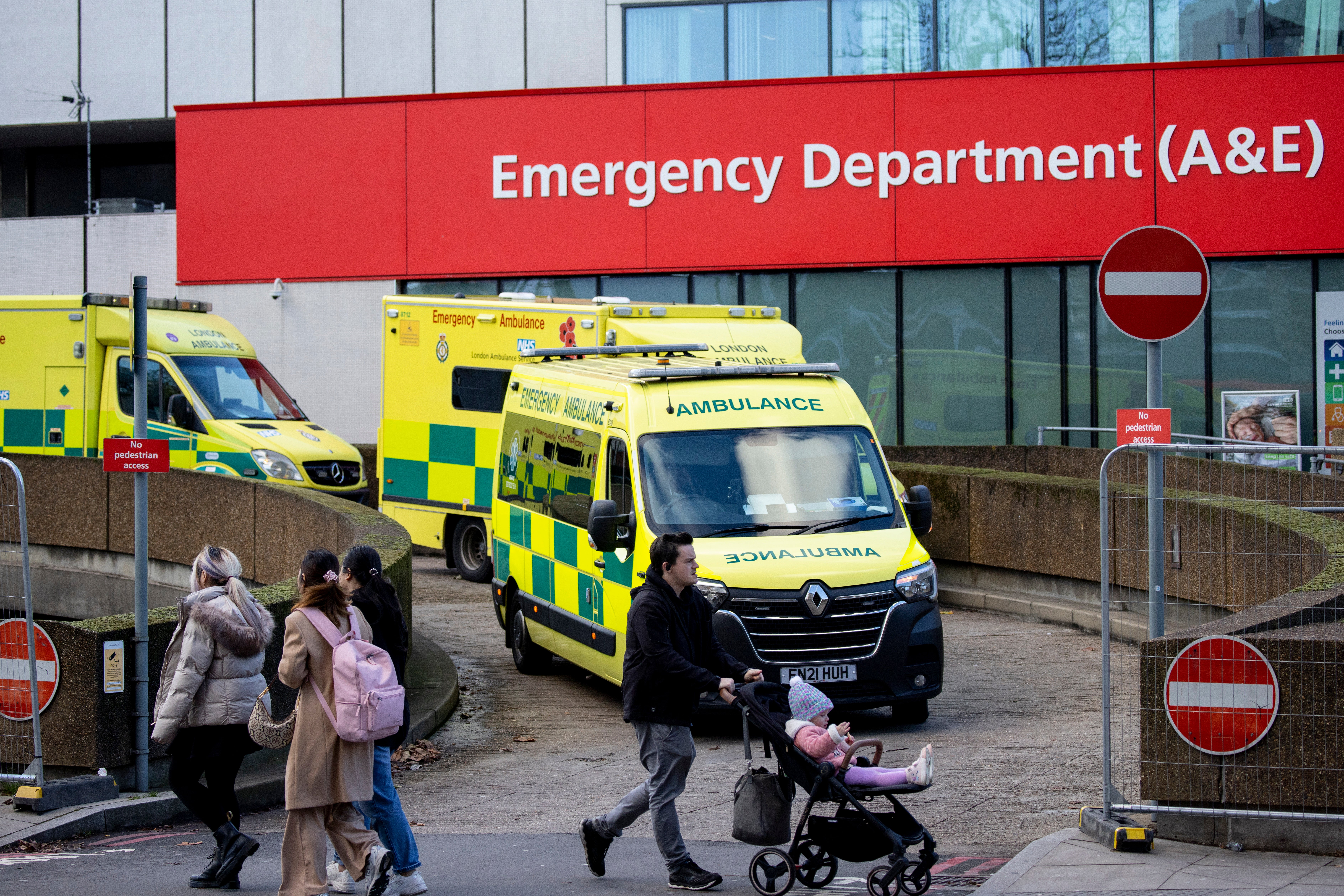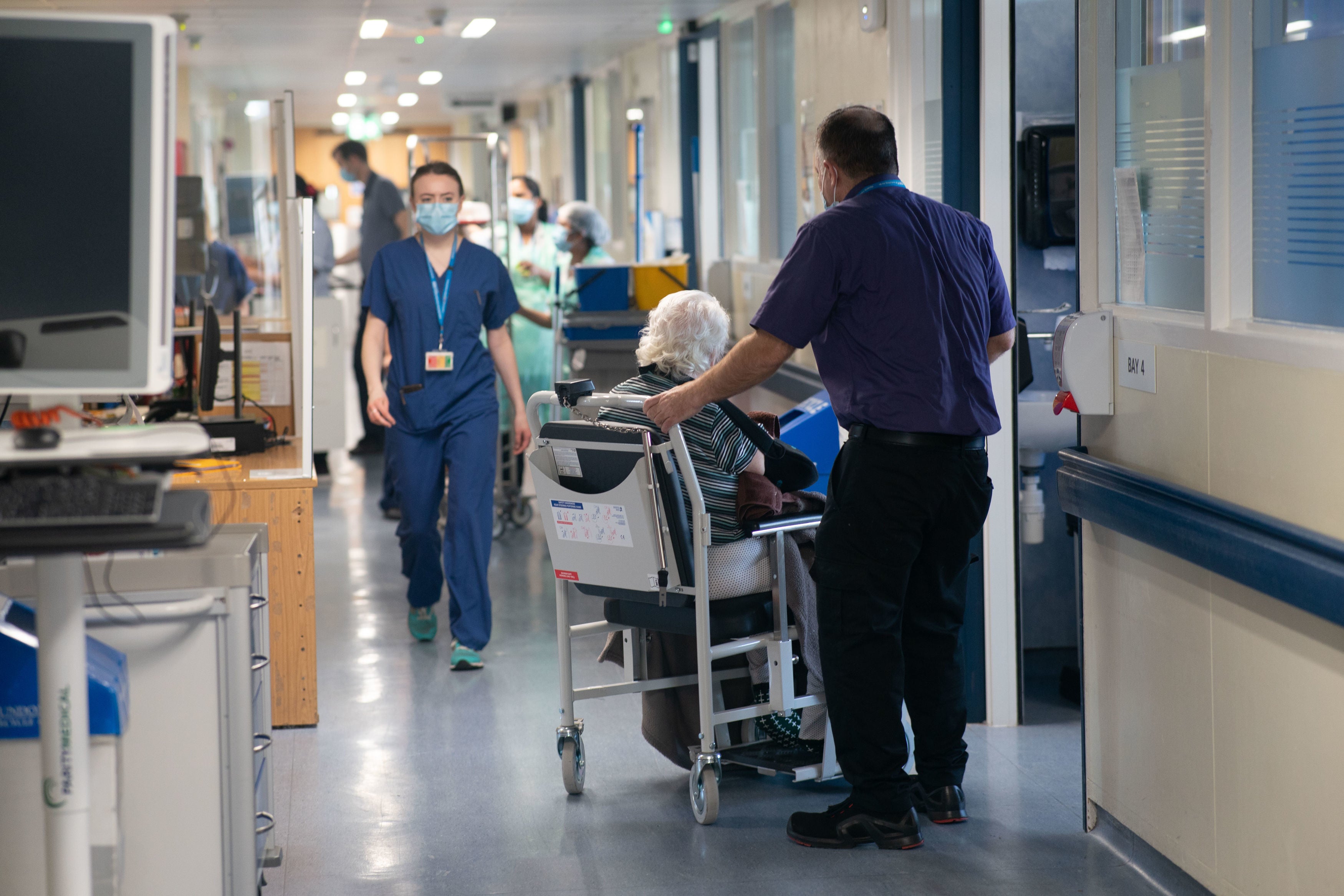Why Mondays are the deadliest day to go to A&E
New data shows more people die at start of the week as hospitals are stretched to the limit after failing to discharge patients at the weekend
Your support helps us to tell the story
From reproductive rights to climate change to Big Tech, The Independent is on the ground when the story is developing. Whether it's investigating the financials of Elon Musk's pro-Trump PAC or producing our latest documentary, 'The A Word', which shines a light on the American women fighting for reproductive rights, we know how important it is to parse out the facts from the messaging.
At such a critical moment in US history, we need reporters on the ground. Your donation allows us to keep sending journalists to speak to both sides of the story.
The Independent is trusted by Americans across the entire political spectrum. And unlike many other quality news outlets, we choose not to lock Americans out of our reporting and analysis with paywalls. We believe quality journalism should be available to everyone, paid for by those who can afford it.
Your support makes all the difference.The number of people dying needlessly in A&E soars on a Monday as hospitals are stretched to the limit and failing to discharge patients at the weekend, new data shows.
Figures uncovered by The Independent show an average of 126 patients died every Monday between 2020-2023 – 25 per cent higher than any other day. On a Saturday, the average number of deaths drops as low as 90.
Waiting times are also shown to spike massively at the start of the week, with an average of 9,300 patients spending more than 12 hours waiting on a Monday – up to 2,000 more than any other day.
Medical experts said the rise in A&E waits can be attributed to people staying away from hospitals during weekends and patients not being discharged from medical care, causing a bottleneck in an already buckling system.
The stark statistics also directly contradict repeated government efforts to make the NHS a seven-day service. Multiple coroners have warned the government and health leaders about delays to patients’ treatment and diagnosis due to variations in staffing and access to specialists – particularly over the weekend.
Adrian Boyle, president of the Royal College of Emergency Medicine, said the NHS England data – obtained by this publication and analysed by Professor Steve Black from the RCEM – clearly signposted an “increased risk” at the start of the week. Another expert said the sharp rise in deaths on Mondays showed an A&E “running constantly in the red zone”.
Dr Boyle told The Independent: “Staff will be very, very busy on a Monday afternoon. There will also be more attendances on a Monday because GPs, who largely haven’t worked over the weekend, will find things and then patients will get referred up to the hospital.”
The top emergency doctor said he would arrive for a Monday shift in A&E to a full waiting room or queue of ambulances and would not know where to start to tackle the problem.

“You feel anxious and increasingly worry about the patients who are waiting,” he said. “Because there are so many patients, you’re trying to find that needle in the haystack of somebody with something very dangerous.”
The latest figures – which document the number of deaths, wait times and attendances over a seven-day period – show the average number of “needless” deaths on a Monday has dramatically risen over the past few years, soaring from 28 per week in 2020 to 184 per week in 2023. These figures relate to patients who died due to waiting for more than 12 hours and are higher on a Monday than any other day.
Further analysis of NHS England figures shows ambulance handover delays are highest at the beginning of the week with an average of 4,145 hours lost to ambulance waiting outside of A&E on Mondays, compared to 2,569 on Saturdays.
The Independent’s calculations show a consistent pattern of attendance peaking on Mondays. As attendances peak, so do waiting times in A&E, with a higher number of patients waiting more than 12 hours on a Monday followed by Tuesday, and dropping on the weekend – with 6,536 patients on average on Saturdays.
Kathleen Booth, 91, died in June last year after she was admitted to the Royal Stoke Hospital with a hip fracture. She went to the hospital on a Friday but wasn’t operated on until the following Tuesday.
A senior coroner investigating her death found that a combination of limited care over the weekend and a rush of patients on the Monday contributed to her death.

He issued a rare prevention of future deaths report – which are sent when a coroner thinks action is needed to protect lives – warning: “The operation was due on Monday 12 June 2023 but was delayed until the following day due to a large amount of trauma patients in the hospital.
“The injury happened on a Friday, meaning less staff and experience were available.”
It added: “Patients can be disadvantaged by not receiving treatment if an injury is sustained on a Friday as cover over the weekend is limited.”
In response, the University Hospital of North Midlands NHS Trust admitted it had less theatre capacity during the weekends for surgeries.
Prof Black said the problem with A&E on Mondays had been highlighted 20 years ago and was improving but has now reverted back again.
"In 2005, analysis showed there were far fewer discharges at the weekend, leaving too few free beds on Mondays – the busiest day of the week for attendance – for A&E admissions,” he said.
“As discharges happened, more beds became free and A&E performance improved later in the week. We advised trusts to manage discharges differently to improve A&E.
“Twenty years later the same pattern exists in A&E as the advice on discharges seems to have been long forgotten.
“Overall A&E performance is hugely worse, but the daily pattern shows that hospitals have forgotten to fix the worst cause: how they manage discharges.”
Promises to have a seven-day NHS have been repeatedly made throughout the last decade. In 2015 the government issued a pledge towards “working with the NHS so that seven-day services are available in all hospitals”.
Despite this, difficulties in discharging patients – and carrying out diagnostics during the weekend – persists, which is having a knock-on effect on emergency services.
Siva Anandaciva, chief analyst from think tank the King’s Fund, said the sharp rise in deaths on Mondays showed an A&E “running constantly in the red zone”.
He continued: “If you have enough capacity in the system – from beds to staff – you can flex up or down to deal with surges of demand.
“But if your health system doesn’t have the resources it needs to face demand, it will also feel like it is on the back foot.”
This week, the RCEM published a report warning 250 people were dying needlessly every week due to waits lasting more than 12 hours. However, new analysis of figures obtained by The Independent suggests this figure is as high as 634. We have calculated that figure by including patients who were subject to delays of more than four hours, as well as those who were discharged from hospital, not just admitted.
Commenting on The Independent’s analysis, Mr Anandaciva said: “We know that A&E waiting times increase during ‘rush hour’. And these rush hours can occur because of a peak in the demand for care. For example, patients might not seek out services on the weekend or might not have been able to access services over the weekend, so their conditions deteriorate and they present on Monday.
“And for some services, when you do eventually get in on a Monday, they might refer on to A&E, so there is a ‘batch’ of patient demand that hits A&E.”
The figures come as 100 NHS trusts are set to implement “Martha’s rule”, which will allow patients’ families to request a second opinion from doctors about intensive care options if they have concerns.
The rule has been brought in following the death of 13-year-old Martha Mills who died after her care was not escalated by staff at King’s College Hospital, and her parents were unable to reach senior doctors over the weekend.
Join our commenting forum
Join thought-provoking conversations, follow other Independent readers and see their replies
Comments